Heonjin Ha
Language-Assisted Feature Transformation for Anomaly Detection
Mar 03, 2025
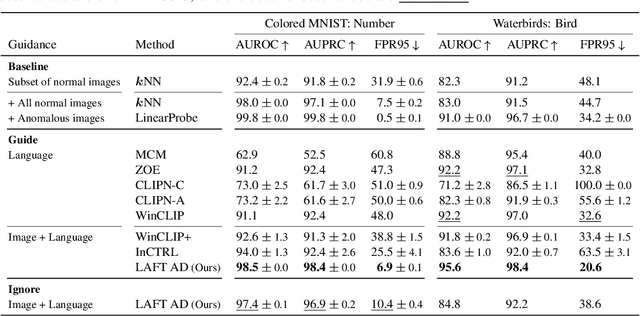
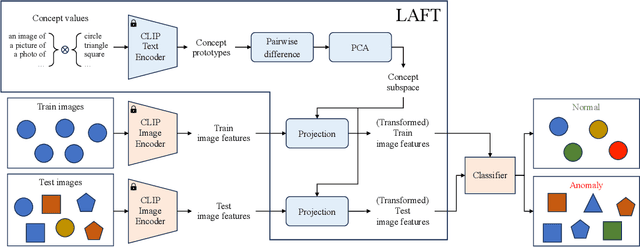
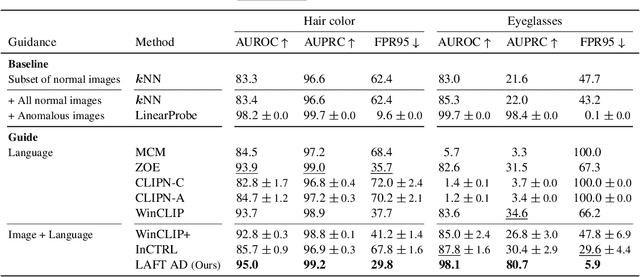
Abstract:This paper introduces LAFT, a novel feature transformation method designed to incorporate user knowledge and preferences into anomaly detection using natural language. Accurately modeling the boundary of normality is crucial for distinguishing abnormal data, but this is often challenging due to limited data or the presence of nuisance attributes. While unsupervised methods that rely solely on data without user guidance are common, they may fail to detect anomalies of specific interest. To address this limitation, we propose Language-Assisted Feature Transformation (LAFT), which leverages the shared image-text embedding space of vision-language models to transform visual features according to user-defined requirements. Combined with anomaly detection methods, LAFT effectively aligns visual features with user preferences, allowing anomalies of interest to be detected. Extensive experiments on both toy and real-world datasets validate the effectiveness of our method.
Biomedical image analysis competitions: The state of current participation practice
Dec 16, 2022Abstract:The number of international benchmarking competitions is steadily increasing in various fields of machine learning (ML) research and practice. So far, however, little is known about the common practice as well as bottlenecks faced by the community in tackling the research questions posed. To shed light on the status quo of algorithm development in the specific field of biomedical imaging analysis, we designed an international survey that was issued to all participants of challenges conducted in conjunction with the IEEE ISBI 2021 and MICCAI 2021 conferences (80 competitions in total). The survey covered participants' expertise and working environments, their chosen strategies, as well as algorithm characteristics. A median of 72% challenge participants took part in the survey. According to our results, knowledge exchange was the primary incentive (70%) for participation, while the reception of prize money played only a minor role (16%). While a median of 80 working hours was spent on method development, a large portion of participants stated that they did not have enough time for method development (32%). 25% perceived the infrastructure to be a bottleneck. Overall, 94% of all solutions were deep learning-based. Of these, 84% were based on standard architectures. 43% of the respondents reported that the data samples (e.g., images) were too large to be processed at once. This was most commonly addressed by patch-based training (69%), downsampling (37%), and solving 3D analysis tasks as a series of 2D tasks. K-fold cross-validation on the training set was performed by only 37% of the participants and only 50% of the participants performed ensembling based on multiple identical models (61%) or heterogeneous models (39%). 48% of the respondents applied postprocessing steps.
2020 CATARACTS Semantic Segmentation Challenge
Oct 21, 2021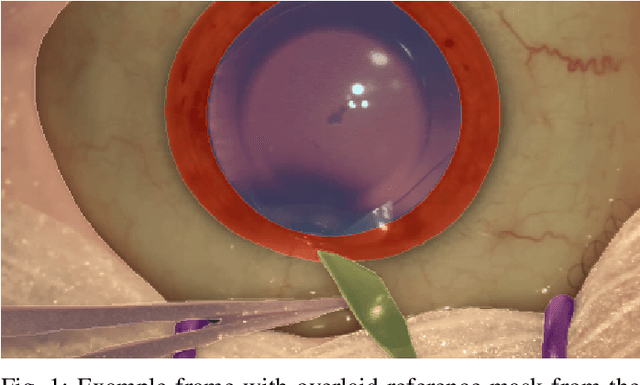
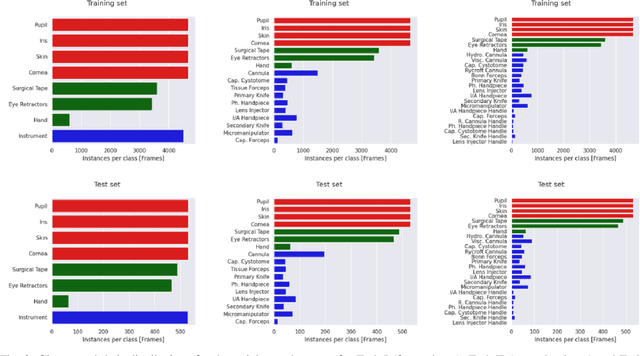
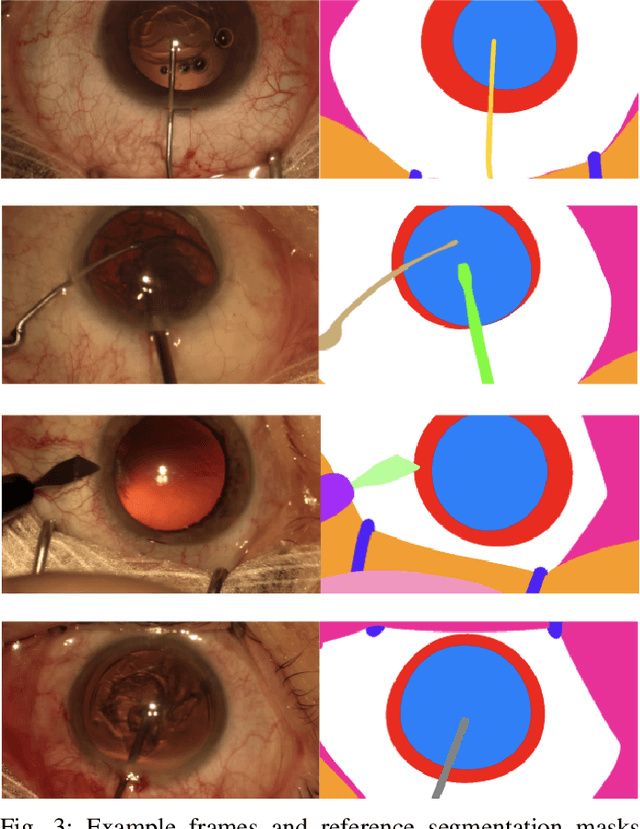
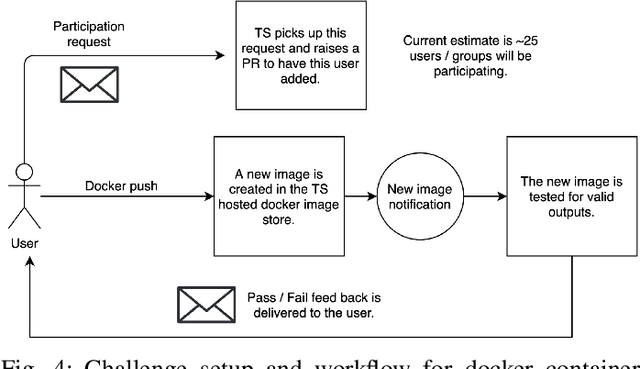
Abstract:Surgical scene segmentation is essential for anatomy and instrument localization which can be further used to assess tissue-instrument interactions during a surgical procedure. In 2017, the Challenge on Automatic Tool Annotation for cataRACT Surgery (CATARACTS) released 50 cataract surgery videos accompanied by instrument usage annotations. These annotations included frame-level instrument presence information. In 2020, we released pixel-wise semantic annotations for anatomy and instruments for 4670 images sampled from 25 videos of the CATARACTS training set. The 2020 CATARACTS Semantic Segmentation Challenge, which was a sub-challenge of the 2020 MICCAI Endoscopic Vision (EndoVis) Challenge, presented three sub-tasks to assess participating solutions on anatomical structure and instrument segmentation. Their performance was assessed on a hidden test set of 531 images from 10 videos of the CATARACTS test set.
Deep Active Learning with Augmentation-based Consistency Estimation
Nov 05, 2020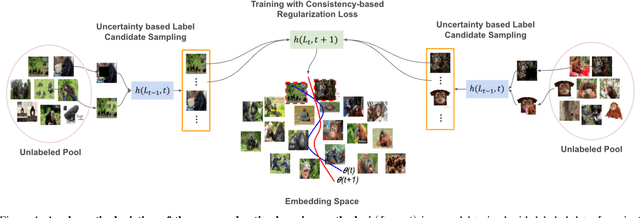



Abstract:In active learning, the focus is mainly on the selection strategy of unlabeled data for enhancing the generalization capability of the next learning cycle. For this, various uncertainty measurement methods have been proposed. On the other hand, with the advent of data augmentation metrics as the regularizer on general deep learning, we notice that there can be a mutual influence between the method of unlabeled data selection and the data augmentation-based regularization techniques in active learning scenarios. Through various experiments, we confirmed that consistency-based regularization from analytical learning theory could affect the generalization capability of the classifier in combination with the existing uncertainty measurement method. By this fact, we propose a methodology to improve generalization ability, by applying data augmentation-based techniques to an active learning scenario. For the data augmentation-based regularization loss, we redefined cutout (co) and cutmix (cm) strategies as quantitative metrics and applied at both model training and unlabeled data selection steps. We have shown that the augmentation-based regularizer can lead to improved performance on the training step of active learning, while that same approach can be effectively combined with the uncertainty measurement metrics proposed so far. We used datasets such as FashionMNIST, CIFAR10, CIFAR100, and STL10 to verify the performance of the proposed active learning technique for multiple image classification tasks. Our experiments show consistent performance gains for each dataset and budget scenario.
 Add to Chrome
Add to Chrome Add to Firefox
Add to Firefox Add to Edge
Add to Edge